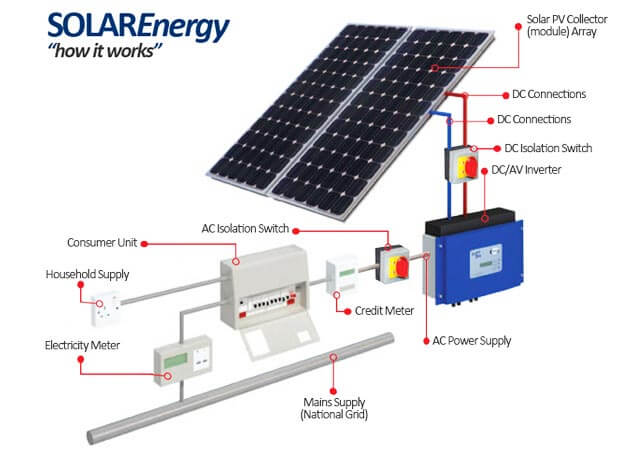The Sun emits energy in the form of electro-magnetic radiation that spans from deep ultra-violet through to far infra-red; 70% of the energy that reaches the Earth falls in the visible spectrum. While the ultra-violet portion of this spectrum is mostly shielded by our atmosphere, the remaining portion reaches its surface in the form of visible light (violet through to red) and heat (infra-red). Technology engineered for capturing both the light (visible and invisible) and the heat from the Sun now exists in the form of photo-voltaic cells (commonly known as solar cells) and heat converters respectively.
Photo-voltaic conversion involves the interaction of a photon with an electron inside a semiconductor material to generate electricity. This energy can then be used by any electrical device or transported through the national grid. Thus its transportability, combined with a pre-existing infrastructure to do so makes it a very useful commodity which can be bought and sold.

In general, economically feasibility is maximized for individual and remote consumers for charging cell-phones, running a radio or lighting in areas such as in a village home or school that has no grid connection. It is an ideal solution for access to electricity in rural areas in Bangladesh that are not yet connected to the national grid.
We have the engineering skill set to design and supply a turn-key solution as well as the practical experience to meet all your PV based solar power needs. Along with our local and global partners, we strive to find most cost-effective yet customized solutions for our customers. We can provide this as a stand-alone engineering service or package it as part of a larger scale new sub-station project where there is mandatory requirement for 10% provision of solar power.
Among our recent sub-station projects where in a government run hospital has involved the installation of solar power system to run fans and lights at an in-patient ward.
